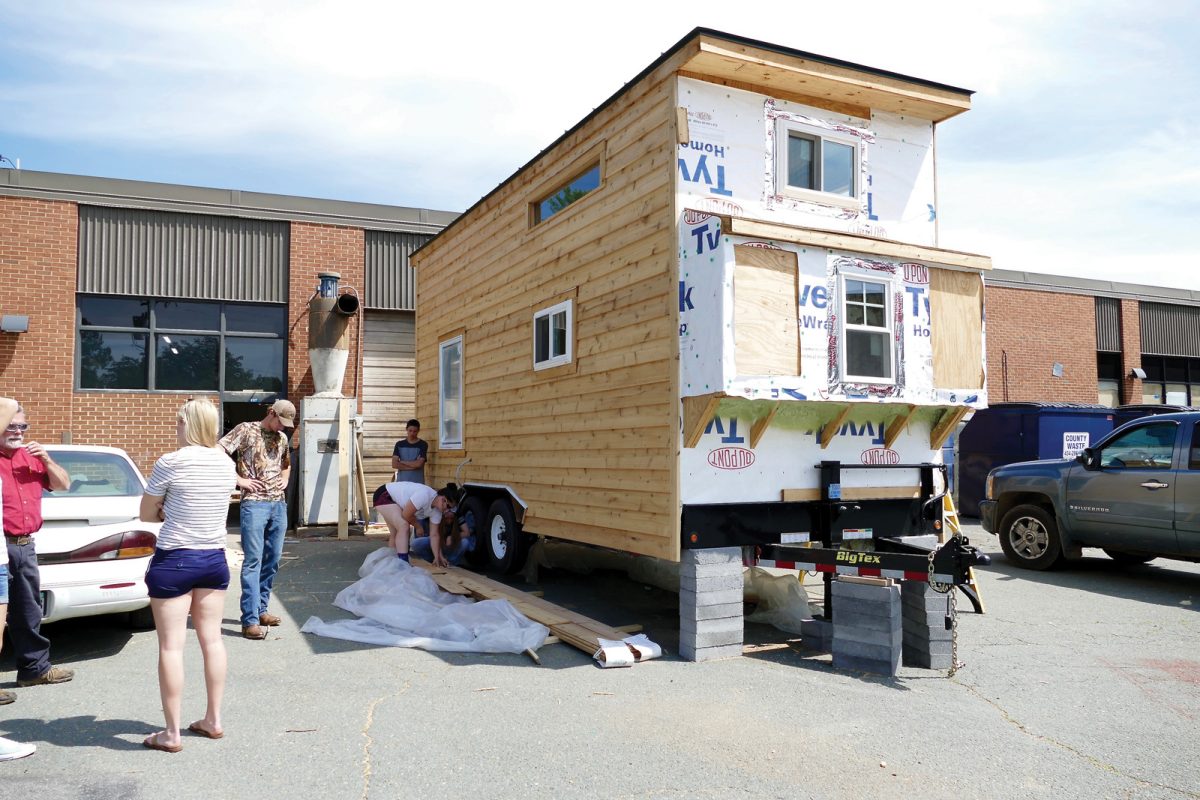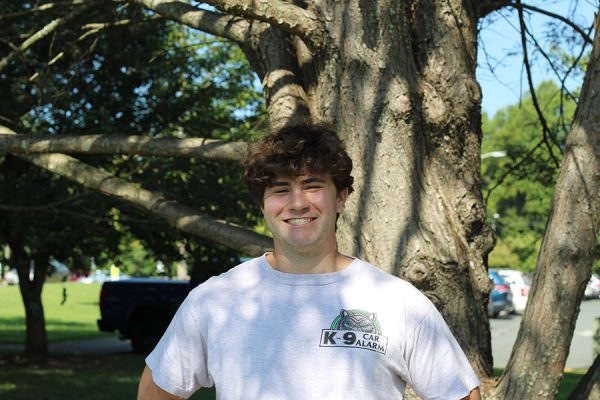You’ve most likely seen at least one HGTV show on some sort of wacky housing trend. From Treehouse Masters to Tiny Luxury, they’ve found a way to corner the market on shows that highlight interesting and eccentric lifestyles. What you might not realize when watching an episode of Tiny Luxury, though, is just how many people actually live in tiny homes across the United States. According to BBC News, more than 10,000 people nationwide live in tiny houses, and projections show those numbers are only set to grow in the coming years.
The WAHS engineering class seems to have noticed the trends years ago and capitalized on the fad. Two WAHS tiny houses were built around 2016 and 2019 and were schoolwide phenomenons. This year, WAHS shop has finally begun a third edition of the project.
Junior Molly Streit has been in Kevin Matheny’s Engineering Class for 3 years and has been the commanding force behind the new tiny house project. Streit said, “At the end of last year, I was kind of getting bored of doing all the tiny little projects that we had been doing. So I asked Mr. Matheeny if we could do a bigger project like a tiny house and he thought it was cool. He kind of took it and ran with it.”
Matheny seems to be just as excited as Streit about the project and finding a good team to get it done. Matheny said because the project is a difficult one, “you gotta have the right people.”
Streit has been working with a small team of students to construct the tiny house, each with a different set of responsibilities. Streit has assumed the role of foreman, while other students have taken up different roles. Junior Anders Felts has been working on the business end, trying to find material donations and figure out a plan for selling the house.
The new tiny house is being completely funded by the shop class. Since the first edition, when Albemarle County matched local companies’ donations totaling 6,000$, which was paid back with interest after the sale of the first house, the WAHS tiny houses are self-sustaining projects. No county money is used; it’s all based on old profit or new donations.
This has spurred the team’s biggest challenge; slow construction stemming from the delayed sale of the old tiny house. At the beginning of the year preceding the second tiny house sale, the budget for materials was limited. Coming into 2024 with the new money from the sale, the project seems to have caught new wind. Streit, Felts, and Matheny all expressed their confidence that the project would be done before the year’s end, and maybe even by spring break.
Despite the extended time it took to sell the last tiny house, the team is optimistic they’ll be able to find a buyer. Felts said, “There’s a lot of people that would buy one of these, already there’s people interested.” Matheny seems to share the team’s confidence that the house will be sold, saying he had “no” worry at all.
The team’s only worry about selling the house is that people may be skeptical about their craftsmanship. “We’re worried that people are gonna see it as sketchy to buy from a bunch of high schoolers,” said Streit.
Tiny houses have become a fun and profitable WAHS Shop tradition that seems to be sticking around as long as the tiny houses craze keeps up. So, if you’re ever watching an episode of Tiny House Hunters, remember to check if it was built by WAHS Engineering.




